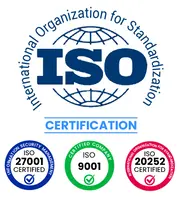Certified Global Research Member


Key Questions Answered
- Global Market Outlook
- In-depth analysis of global and regional trends
- Analyze and identify the major players in the market, their market share, key developments, etc.
- To understand the capability of the major players based on products offered, financials, and strategies.
- Identify disrupting products, companies, and trends.
- To identify opportunities in the market.
- Analyze the key challenges in the market.
- Analyze the regional penetration of players, products, and services in the market.
- Comparison of major players’ financial performance.
- Evaluate strategies adopted by major players.
- Recommendations
Why Choose Market Research Future?
- Vigorous research methodologies for specific market.
- Knowledge partners across the globe
- Large network of partner consultants.
- Ever-increasing/ Escalating data base with quarterly monitoring of various markets
- Trusted by fortune 500 companies/startups/ universities/organizations
- Large database of 5000+ markets reports.
- Effective and prompt pre- and post-sales support.
In-depth Analysis of Master Data Management Market Industry Landscape
MDM (Master Data Management) becomes one of the vital tools for the businesses that want to improve their data management and get better on making the decision. The MDM market has recorded a remarkable steady growth over the years, as a result of other market dynamics which has kept it growing. One of the market factors which is a driving force of the MDM market growth is the growing need to control and comply with data management. As enterprises deal with large mounds of information it is important to check whether the data is precise, consistent, and safe. MDM solutions act as a hub to control, define and regulate data while ensuring compliance with principles like GDPR and CCPA. This need for data governance as well as another compliance has raised the need for MDM solutions which can be identified in different industries. Another element of market factors increasing MDM market growth is growing cloud adoption by customers. Cloud-based MDM solution provides scalability, flexibility, and pocket-friendly costs making it an ideal option for all business sizes. Both with the cloud organizations are capable to access remotely and to manage their data, resulting in the cost reduction of physical infrastructure and more data accessibility. Since more companies are turning to clouds, the need for MDM delivered cloud services is also on the rise. Moreover, innovations in data-intensive technologies including IoT (Internet of Things) and AI (Artificial Intelligence) propel the growth of the MDM (Master Data Management) sector. Therefore, such technologies generate tons of data that will have to be captured, stored and crunched. Thereby, MDM solutions allow companies to administer and consolidate data from multiple sources on the one hand, and on the other hand, to make use of the capabilities of IoT and AI tools in full. Consistently developers of business applications are getting engaged in TM technologies where the need for other tools that can manage the complexity of variety of data sources will be continuously increasing. Add to this the fact that dependable and correct customer information has become an inevitable factor that boosts the popularity of MDM solutions. In the face of strenuous competition, companies commit themselves to customer relationships based on specificity and tailored offers. It means identifying the target audience's buying habits, preferences, and demographics. MDM solutions offer a one-stop shop for customer data by unifying view and enable businesses to segment customer base, improve customer service, and develop tailor-made marketing campaigns. Imprecise customer data being considered by companies within the market is no more an exception as the requirement for MDM solution which provides accurate customer insight is growing rapidly. Covered Aspects:| Report Attribute/Metric | Details |
|---|---|
| Segment Outlook | Type, Professional Service, Deployment, Industry and Region |
Master Data Management Market Highlights:
Leading companies partner with us for data-driven Insights
Kindly complete the form below to receive a free sample of this Report
Tailored for You
- Dedicated Research on any specifics segment or region.
- Focused Research on specific players in the market.
- Custom Report based only on your requirements.
- Flexibility to add or subtract any chapter in the study.
- Historic data from 2014 and forecasts outlook till 2040.
- Flexibility of providing data/insights in formats (PDF, PPT, Excel).
- Provide cross segmentation in applicable scenario/markets.









